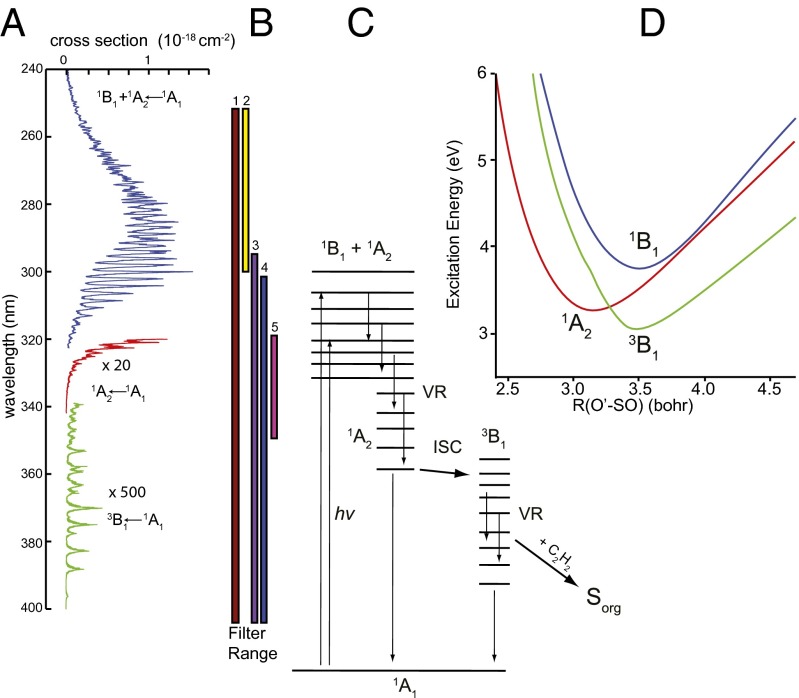Fig. 1.
Photochemistry of SO2 in the 240–400-nm region. (A) UV absorption cross-section for SO2 between 240 and 400 nm (from refs. 33 and 34). (B) Vertical lines showing the spectral ranges for the different optical filters tested. (C) Schematic of the photochemistry of the experiments. SO2 initially is excited into the coupled  1B1/
1B1/ 1A2 states. It vibrationally relaxes (VR) via collisions with the bath gas. At low vibrational levels of the
1A2 states. It vibrationally relaxes (VR) via collisions with the bath gas. At low vibrational levels of the  1A2 state, intersystem crossing may lead to irreversible crossing to the
1A2 state, intersystem crossing may lead to irreversible crossing to the  3B1 state as the result of vibrational relaxation of the
3B1 state as the result of vibrational relaxation of the  3B1 state below the origin of the
3B1 state below the origin of the  1A2 band. Isotope effects due to near-resonant spin–orbit coupling between the singlet and triplet states in this region may lead to mass-independent isotope anomalies in the resulting triplet-state SO2. The triplet-state SO2 finally reacts with acetylene (C2H2) to form the organosulfur products analyzed in this study. (D) Potential energy surfaces for the singlet and triplet states of SO2 as a function of the O'-SO Jacobi distance with the S-O distance and the Jacobi angle optimized.
1A2 band. Isotope effects due to near-resonant spin–orbit coupling between the singlet and triplet states in this region may lead to mass-independent isotope anomalies in the resulting triplet-state SO2. The triplet-state SO2 finally reacts with acetylene (C2H2) to form the organosulfur products analyzed in this study. (D) Potential energy surfaces for the singlet and triplet states of SO2 as a function of the O'-SO Jacobi distance with the S-O distance and the Jacobi angle optimized.

